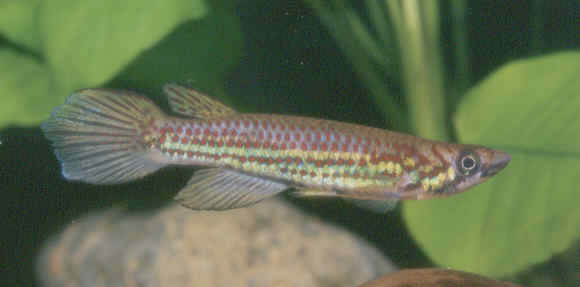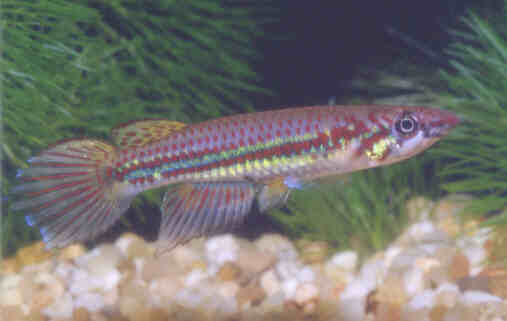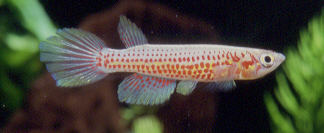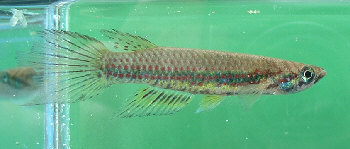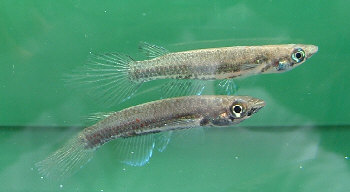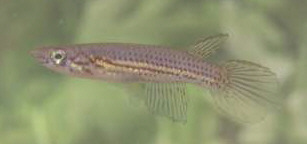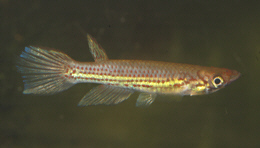Epiplatys chevalieri chevalieri (Pellegrin 1904)
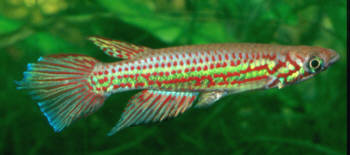
This
specimen was a contaminant in a commercial shipment to the USA in 1981.
Photo
courtesy of Tony Terceira.
| Meaning of Name |
After Auguste Chevalier who discovered the species with Dr. E.Docorse. | |||||||||
| First Description |
Pellegrin J. 1904. Cyprinodontidés nouveaux du Congo et de l'Oubanghi. Bulletin du Muséum National d'Histoire Naturelle 10: p 222. | |||||||||
| Size |
5 cm | |||||||||
| Meristics |
| |||||||||
| Karyotype |
| |||||||||
| Sub-Genus |
Epiplatys | |||||||||
| Group |
chevalieri clade | |||||||||
| Synonyms |
| |||||||||
Populations
|
| |||||||||
| Type Locality |
Brazzaville, southern Congo. Boulenger gives the type locality as 'Congo (Stanley Pool)' Types in Paris Museum. | |||||||||
| Distribution |
Mainly found on the west bank of the Zaire River. Found in southwestern Central African Republic southwards through eastern Congo. http://homepage.uibk.ac.at/homepage/c102/c102mr/epiplaty/chevalie.htm | |||||||||
| Habitat |
Small rainforest rivers, creeks & swampy areas, also forested savannah. | |||||||||
| Distinguishing Characteristics | Distinguished from E.chevalieri nigricans by a greater body depth. E.chevalieri nigricans is a thinner looking fish. | |||||||||
| Colour/Pattern Variability | The number of red spots in the unpaired fins can vary from many to being virtually non-existant. Body shape is a good indicator for this species. | |||||||||
| History |
Pellegrin, in 1904, described this species as Haplochilus chevalieri from 3 specimens collected at Brazzaville. Poll rediscovered the species in 1939 in a collection originating from Stanley Pool. Lambert, in 1961, suggested that E.chevalieri & E.nigricans were closely related & E.nigricans could be considered to be a subspecies of E.chevalieri. The BKA had a small import consisting of 7 fish from Kinshasa around August 1972. | |||||||||
| Breeding Notes |
Geoff
Wood put a breeding report in BKA newsletter No. 114, February 1975. He had difficulty
when first breeding them in Zaire but painted the back & sides of the tank
dark green & covered the top with brown paper. Peat fibre was added which
was floating & sunken. The fish were fed ants & mosquito larvae &
left undisturbed. Lays on top & bottom mops. I used rainwater for my wild fish & found them quite easy to breed. Some reports suggest they are more difficult. Eggs water incubate for around 14 days with sexual maturity around 7-8 months. | |||||||||
| Diameter of Egg | ||||||||||
| Remarks |
This species is sensitive to nitrate poisoning so frequent water changes are required.
|
